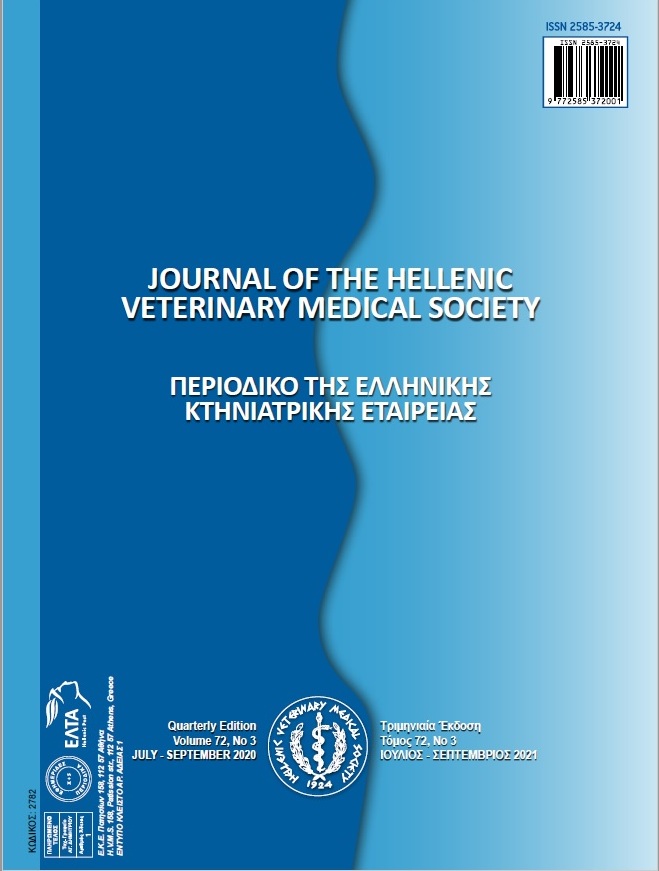First study on oxyuriosis in horses from Algeria: Prevalence and clinical aspects
Аннотация
The present study was carried out the Tiaret region, on horses belonging to the Chaouchaoua National Haras, ONDEEC and on two private farms during the period from February 05th to April 17th, 2019. It aims to assess the overall prevalence of equine oxyuriosis in the area and to describe the most dominant clinical signs of this parasite infection. Scotch tape test was applied on 176 horses randomly selected and the microscopic observation of slides was carried out at the parasitology laboratory of the Veterinary institute of Tiaret. The overall prevalence of Oxyuris equi was 38.64% with females being more infected (37.04%) than males (20.45%). The prevalence of oxyuriosis was higher in fillies (70%) than in foals (48.39%).The high prevalence of Oxyuris equi was recorded in the private farms with a percentage of 85% and 44% in farm 1 and 2, respectively. The more commonly clinical signs were tail rubbing in 42% and scratching in 32% of positive horses.Equine oxyuriosis is a common infection in the study area and requires the application of hygienic measures with more therapeutic and preventive care.
Article Details
- Как цитировать
-
KOUIDRI, M., BOUMEZRAG, A., SELLES SIDI MOHMMED, A., TOUIHRI, Z., SASSI, A., & CHIBI, A. (2021). First study on oxyuriosis in horses from Algeria: Prevalence and clinical aspects. Journal of the Hellenic Veterinary Medical Society, 72(3), 3179–3184. https://doi.org/10.12681/jhvms.28512
- Выпуск
- Том 72 № 3 (2021)
- Раздел
- Research Articles

Это произведение доступно по лицензии Creative Commons «Attribution-NonCommercial» («Атрибуция — Некоммерческое использование») 4.0 Всемирная.
Authors who publish with this journal agree to the following terms:
· Authors retain copyright and grant the journal right of first publication with the work simultaneously licensed under a Creative Commons Attribution Non-Commercial License that allows others to share the work with an acknowledgement of the work's authorship and initial publication in this journal.
· Authors are able to enter into separate, additional contractual arrangements for the non-exclusive distribution of the journal's published version of the work (e.g. post it to an institutional repository or publish it in a book), with an acknowledgement of its initial publication in this journal.
· Authors are permitted and encouraged to post their work online (preferably in institutional repositories or on their website) prior to and during the submission process, as it can lead to productive exchanges, as well as earlier and greater citation of published work.



